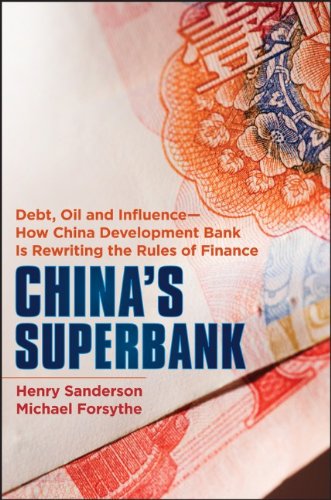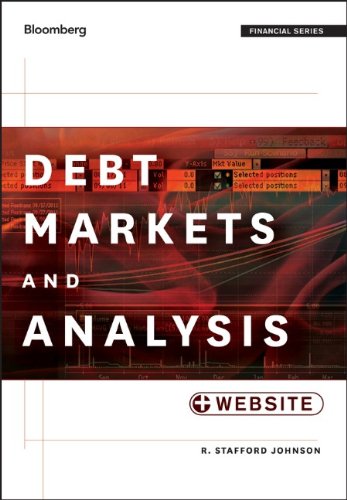[Bloomberg] Videos
In 2001, Greece saw its application for membership into the Eurozone accepted, and the country sat down to the greatest free lunch in economic history. However, the coming years of global economic prosperity would lead to unrestrained spending, cheap borrowing, and a failure to implement financial reform, leaving the country massively exposed to a financial crisis—which duly struck.
In Bust: Greece, the Euro, and the Sovereign Debt Crisis, Bloomberg columnist Matthew Lynn explores Greece’s spectacular rise and fall from grace and the global repercussions of its financial disaster. Page by page, he provides a thrilling account of the Greek financial crisis, drawing out its origins, how it escalated, and its implications for a fragile global economy. Along the way, Lynn looks at how the Greek contagion has spread like wildfire throughout Europe and explores how government ineptitude as well as financial speculators compounded the problem.
Blending financial history, politics, and current affairs, Lynn skillfully tells the story of how one nation rode the wave of economic prosperity and brought a continent, a currency, and, potentially, the global financial system to its knees. Lively, engaging, and thought provoking, Bust reminds us just how interconnected the world really is.
Q&A with Author Matthew Lynn
Author Matthew Lynn Bust looks at how the sovereign debt crisis started in Greece, but why did it start there?
Greece was one of the most profligate nations in the world. It has been virtually continually in default on its debts in one form or another ever since the modern Greek state was created in the nineteenth century. So it was always a fairly good candidate.
At the start of 2010, the markets were already getting worried about sovereign debt. It was essentially Act II of the credit crunch. Governments all around the world had fixed a private debt crisis by turning it into a public debt crisis: they ran up these huge deficits, both to bail out their banking systems and to boost their economies. But the public debts were never any more sustainable than the private debts.
Greece happened to be the easiest country to make an example of. But if it hadn’t been Greece, it would have been someone else.
This was really a crisis about the markets refusing to sanction unending government deficits – and that’s what the book explores.
But the book implies this is a story about the euro as well? Why is that?
It certainly is. The sovereign debt crisis blew apart the euro, and it is going to be very hard to put it back together. Europe’s single currency celebrated its first decade of existence in pretty good shape. The currency was stable, new members were joining, and it was gaining ground on the dollar as the world’s most important currency.
But then the Greeks came along and put a bomb underneath it.
Greece lied and cheated its way into the euro. It completely made up the figures that squeezed it into the euro, and, once it was inside, made no attempt to play by the rules. When confidence in the country collapsed, they expected the rest of Europe to bail them out. But what kind of club is it where you can cheat your way in, ignore the rules, then expect the other members to pick up your bar bills? Not one that anyone is going to want to belong to for long.
So this is not just a story about the sovereign debt crisis – it is a story about how the euro is falling apart, and how that will change the European Union as well.
What did you learn from writing the book?
The book was a real education for me. That was one of the reasons I wrote it. I wanted to learn more about how this fairly small country right on the edge of Europe which no one usually paid very much attention to was suddenly right at the epicentre of a major financial crisis.
It’s not the kind of story you can make sense of just by reading a few headlines. There were so many strands that had to be pulled together. The history of Greece, and why its economy was so underdeveloped. The design of the euro, and all the compromises that led up to its creation that proved to be crippling once the crisis struck. The changing nature of Germany, how it had overcome post-war guilt, and why it was refusing to bail-out the rest of Europe any more. The build-up of government debt right around the word. All of these big themes came together to produce this crisis, and that is what made it such a fascinating book to write.
What are the implications for the world economy of the themes you explore in the book?
Firstly, it’s the end of the euro, at least in its current form. It was a disaster to bail-out Greece, and, curiously enough, I think a lot of the people right at the very top of the policy-making debate knew that. It created a single currency with all the wrong incentives. It would have been far better to let Greece go bust and then to deal with the consequences of that than to try and patch up a broken system. But, in the end, and this process is detailed in the book, they shied away from that, and just threw money at the problem instead.
But it’s not going to work, and the euro is going to slowly unravel as a result. It might be three years, maybe five, maybe ten. But it going to happen, and it is going to be very messy.
But it is also the end of state profligacy, at least in the developed world. For about thirty years, governments have been consistently spending more than they raise in taxes. It’s a very easy option – spending money is a lot more popular than raising taxes. They did it by just continually adding to the debt.
In that respect, the politicians just reflected their electorates. Much the same thing happened in the private sector. In Europe and the U.S., ordinary people didn’t get much wealthier in the last thirty years, they just took on more and more debt.
But this crisis represents the end of that road. You can’t just keep on piling on more and more debt. As the title puts it, the system is bust. And the road is going to be much harder from now on.
Inside the engine-room of China’s economic growth—the China Development Bank
Anyone wanting a primer on the secret of China’s economic success need look no further than China Development Bank (CDB)—which has displaced the World Bank as the world’s biggest development bank, lending billions to countries around the globe to further Chinese policy goals. In China’s Superbank, Bloomberg authors Michael Forsythe and Henry Sanderson outline how the bank is at the center of China’s domestic economic growth and how it is helping to expand China’s influence in strategically important overseas markets.
100 percent owned by the Chinese government, the CDB holds the key to understanding the inner workings of China’s state-led economic development model, and its most glaring flaws. The bank is at the center of the country’s efforts to build a world-class network of highways, railroads, and power grids, pioneering a lending scheme to local governments that threatens to spawn trillions of yuan in bad loans. It is doling out credit lines by the billions to Chinese solar and wind power makers, threatening to bury global competitors with a flood of cheap products. Another $45 billion in credit has been given to the country’s two biggest telecom equipment makers who are using the money to win contracts around the globe, helping fulfill the goal of China’s leaders for its leading companies to “go global.”
Bringing the story of China Development Bank to life by crisscrossing China to investigate the quality of its loans, China’s Superbank travels the globe, from Africa, where its China-Africa fund is displacing Western lenders in a battle for influence, to the oil fields of Venezuela.
Offers a fascinating insight into the China Development Bank (CDB), the driver of China’s rapid economic developmentTravels the globe to show how the CDB is helping Chinese businesses “go global”Written by two respected reporters at Bloomberg News
As China’s influence continues to grow around the world, many people are asking how far it will extend. China’s Superbank addresses these vital questions, looking at the institution at the heart of this growth.
Product Features
- Used Book in Good Condition
An accessible guide to the essential elements of debt markets and their analysis
Debt Markets and Analysis provides professionals and finance students alike with an exposition on debt that will take them from the basic concepts, strategies, and fundamentals to a more detailed understanding of advanced approaches and models.
Strong visual attributes include consistent elements that function as additional learning aids, such as: Key Points, Definitions, Step-by-Step, Do It Yourself, and Bloomberg functionalityOffers a solid foundation in understanding the complexities and subtleties involved in the evaluation, selection, and management of debtProvides insights on taking the ideas covered and applying them to real-world investment decisions
Engaging and informative, Debt Markets and Analysis provides practical guidance to excelling at this difficult endeavor.
Product Features
- Used Book in Good Condition



